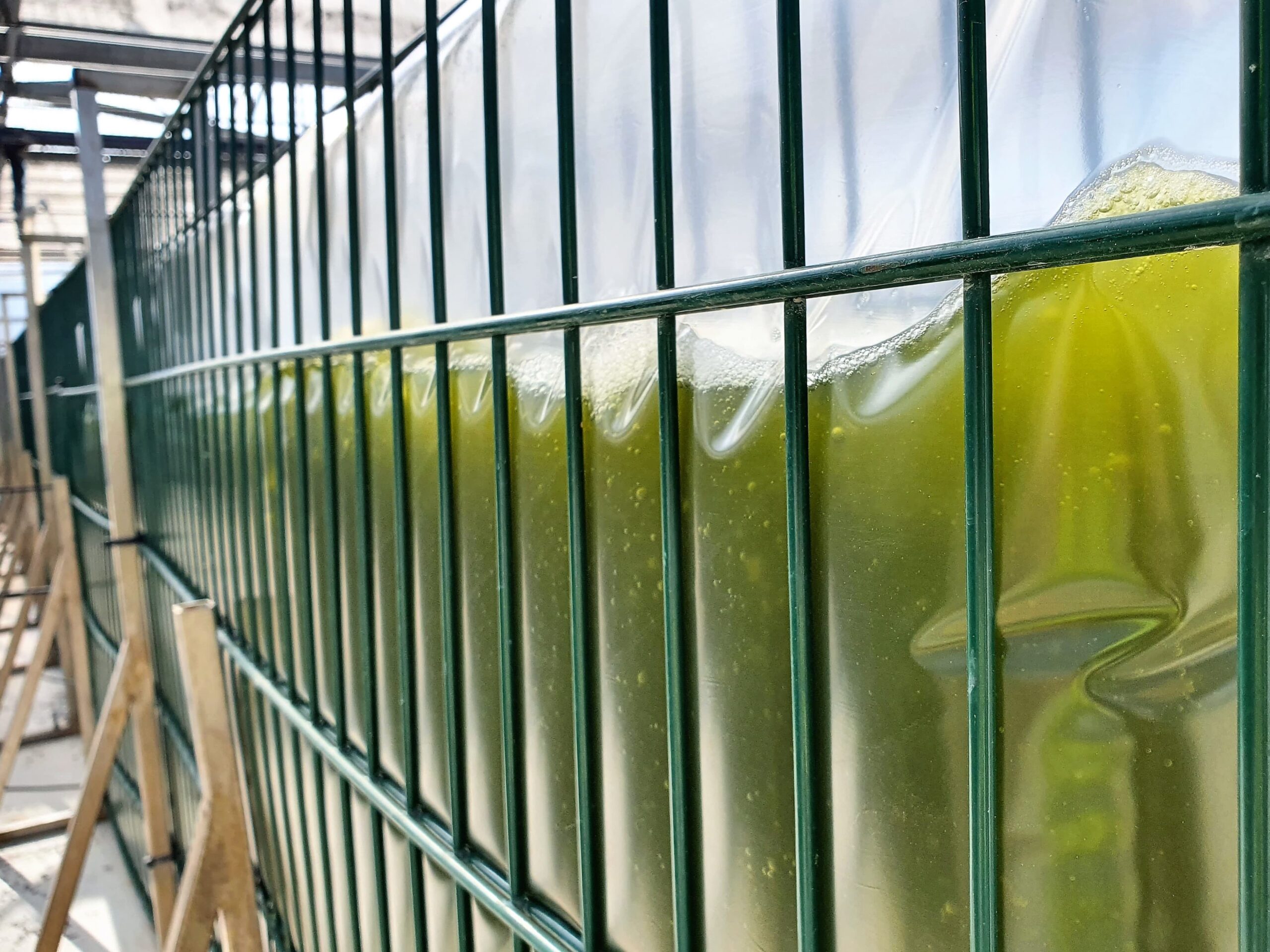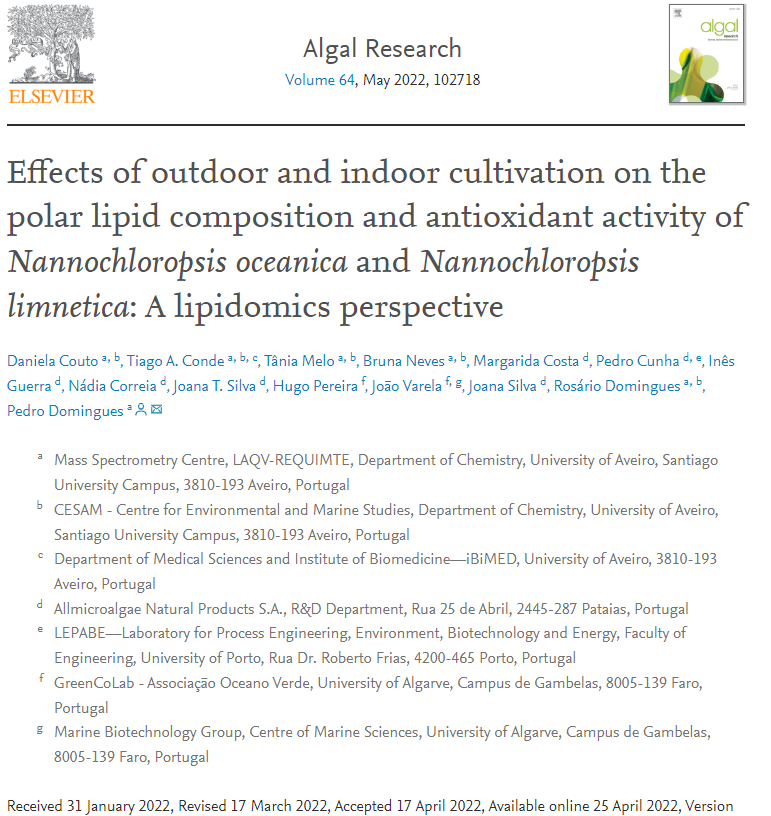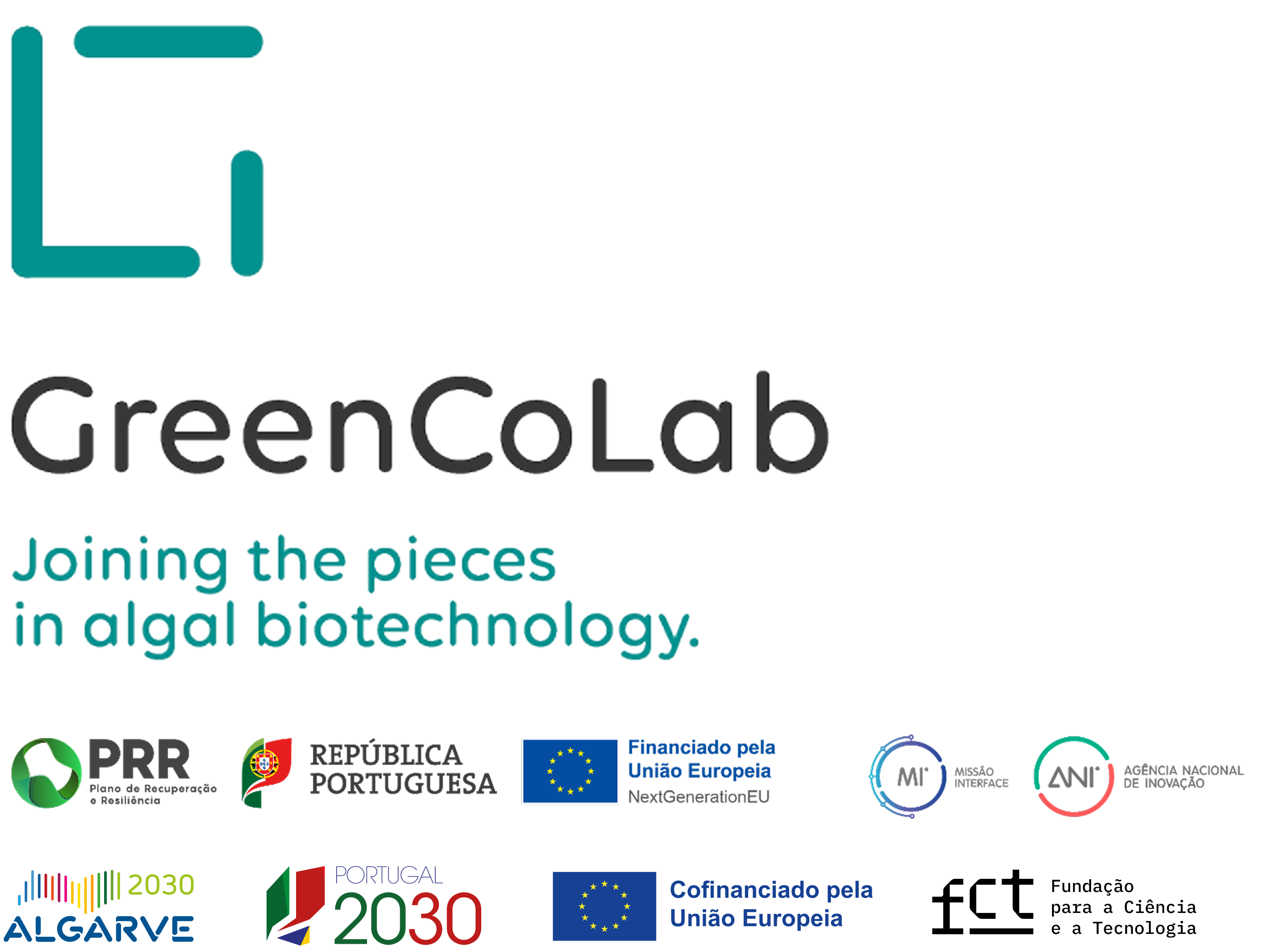

TITLE
Effects of outdoor and indoor cultivation on the polar lipid composition and antioxidant activity of Nannochloropsis oceanica and Nannochloropsis limnetica: A lipidomics perspective
JOURNAL
Algal Research
AUTHORS
Daniela Couto, Tiago A. Conde, Tânia Melo, Bruna Neves, Margarida Costa, Pedro Cunha, Inês Guerra, Nádia Correia, Joana T. Silva, Hugo Pereira, João Varela, Joana Silva, Rosário Domingues, Pedro Domingues
ABSTRACT
Nannochloropsis is a genus of eicosapentaenoic acid-rich microalgae with high levels of value-added polar lipids. However, the polar lipid composition of microalgal biomass is highly dependent on culture conditions (e.g., light or temperature), which are significantly different under indoor and outdoor culture conditions. In this study, we sought to investigate the plasticity of the polar lipid profile of a marine (N. oceanica) and a freshwater (N. limnetica) species of Nannochloropsis grown in indoor and outdoor photobioreactors. To this end, the polar lipidome and fatty acid profiles were characterized by liquid chromatography-mass spectrometry (LC-MS), and gas chromatography–mass spectrometry (GC–MS), respectively. In addition, the antioxidant activity of their lipid extracts was assessed. The highest lipid contents were obtained for the two species grown indoors. LC-MS analysis identified 239 different polar lipid species, of which 220 were shared by all experimental groups. Candidate lipid biomarkers from both culture systems were proposed, including MGDG(34:2), MGDG(34:1) and PG(36:6). For both species, indoor conditions lead to lipid extracts rich in glycolipids and higher in oleic acid content. In contrast, outdoor conditions lead to higher proportions of phospholipids and betaine lipids and a higher relative content of eicosapentaenoic acid (EPA). The polar lipid profile of the two Nannochloropsis species differed primarily in the relative amounts of certain betaine lipids, mainly DGTS (which was increased in N. oceanica) and lysolipids (LPC, and LPE) (increased in N. limnetica), although the majority of lipids were observed in both species. The lipid extracts showed antioxidant activity (IC15) ranging from 30.4 ± 1.8 to 45.7 ± 1.6 μmol Trolox g−1 of lipid extract. Overall, this study provides insight into the lipid metabolic adaptation of two Nannochloropsis species, providing the know-how to obtain a healthy polar lipid-rich biomass useful for novel applications in pharmaceutical, nutraceutical, or novel foods.



